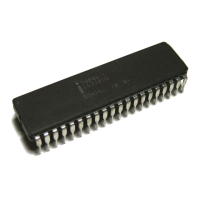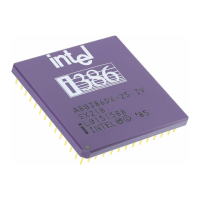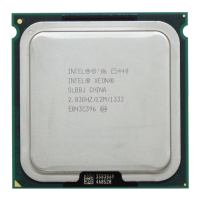180 Design Guide
Intel
®
855GME Chipset and Intel
®
82801DB ICH4 Embedded Platform Design Guide
AGP Port Design Guidelines
7.2.7 Pull-Ups
The AGP 2.0 Specification requires AGP control signals to have pull-up resistors to VDDQ to
ensure they contain stable values when no agent is actively driving the bus. Also, the
AD_STB[1:0]# and ST_STB# strobes require pull-down resistors to GND. The Intel 855GME
chipset GMCH has integrated many of these pull-up/pull-down resistors on the AGP interface and
a few other signals not required by the AGP 2.0 Specification. Pull-ups are allowed on any signal
except AD_STB[1:0]# and SB_STB#.
The Intel chipset GMCH has no support for the PERR# and SERR# pins of an AGP graphics
controller that supports PERR# and SERR#. Pull-ups to a 1.5-V source are required down on the
motherboard in such cases.
NOTES:
1. The Intel chipset GMCH has integrated pull-ups to ensure that these signals do not float when there is no
add-in card in the connector.
2. The Intel chipset GMCH does not implement the PERR# and SERR# signals. Pull-ups on the motherboard
are required for AGP graphics controllers that implement these signals.
3. The Intel chipset GMCH does not implement interrupt signals. AGP graphics controller's INTA# and INTB#
signals must but routed to the system PCI interrupt request handler where the pull-up requirement should be
met as well. For 855GME/ICH4 chipset-based systems, they can be routed to the ICH4's PIRQ signals that
are open drain and require pull-ups on the motherboard.
4. ST[1:0] provide the strapping options for 100-MHz PSB operation and DDR memory, respectively.
5. INTA# and INTB# should be pulled to 3.3 V, not VDDQ.
6. The pull-up/pull-down resistor value requirements are shown in Table 65.
Table 64. AGP Pull-Up/Pull-Down Requirements and Straps
Signal
AGP 2.0 Signal Pull-Up/
Pull-Down Requirements
GMCH Integrated Pull-Up/
Pull-Down
Notes
DEVSEL# Pull-Up
FRAME# Pull-Up
GNT# Pull-Up
INTA# Pull-Up 3, 5
INTB# Pull-Up 3, 5
IRDY# Pull-Up
PERR# Pull-Up 2
PIPE# Pull-Up
RBF# Pull-Up
REQ# Pull-Up 1
SERR# Pull-Up 2
ST[2:0] Pull-Down 4
STOP# Pull-Up Pull-Up
TRDY# Pull-Up
WBF# Pull-Up
AD_STB[1:0] Pull-Up
AD_STB[1:0]# Pull-Down
SB_STB Pull-Up
SB_STB# Pull-Down
SBA[7:0] Pull-Up 1
